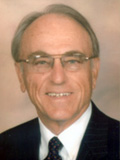How can school personnel effectively implement evidence-based practices or programs?
Page 7: Provide Ongoing Supports
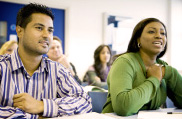 During most training activities, skills or procedures for implementing a program are discussed, demonstrated, and practiced in a relatively short period of time (e.g., one day). Because of this, a teacher’s newly learned skills generally are:
During most training activities, skills or procedures for implementing a program are discussed, demonstrated, and practiced in a relatively short period of time (e.g., one day). Because of this, a teacher’s newly learned skills generally are:
- Basic – They implement the program in the classroom at a rudimentary level.
- Fragile – They may be prone to discontinue a program if students or parents respond negatively.
- Incomplete – They understand the essential elements of the program but not its nuances.
In order to improve or build on these new skills, effective PD should include ongoing support (or technical assistance) provided once the intervention begins. This should be provided frequently throughout the school year, both on a scheduled and an as-needed basis.
In general, the goal of ongoing support is to improve and maintain the skills necessary for correct implementation, to maintain motivation and commitment, to address problems that may arise, and to prevent drift. To accomplish this, the ongoing support may involve one or more of the following:
drift
In implementation fidelity, the inadvertent modification or omission over time of the recommended procedures or activities that make up a practice or program; usually occurs gradually and is considered a threat to fidelity.
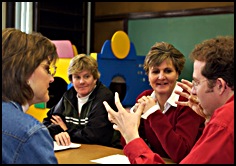 Ongoing support should be used to periodically revisit prior training topics in order to reinforce and expand on teachers’ existing knowledge and to sustain implementation. Research has shown that the timely monitoring of implementation (e.g., as early as one week after the introduction of a practice or program) and prompt retraining can substantially increase the fidelity of implementation. Additionally, implementation should be monitored periodically to check for drift. If teachers have made changes or eliminated program components over time, retraining on the correct procedures should occur.
Ongoing support should be used to periodically revisit prior training topics in order to reinforce and expand on teachers’ existing knowledge and to sustain implementation. Research has shown that the timely monitoring of implementation (e.g., as early as one week after the introduction of a practice or program) and prompt retraining can substantially increase the fidelity of implementation. Additionally, implementation should be monitored periodically to check for drift. If teachers have made changes or eliminated program components over time, retraining on the correct procedures should occur.
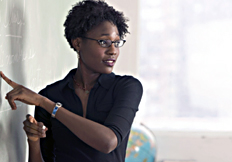 Although opportunities to perform skills or activities and receive corrective feedback during training is crucial, mastering and becoming comfortable with the implementation of a practice or program takes time. Just how much time will, of course, depend to a great degree on the complexity of the practice or program in question. Some estimate that it can take twenty-five instances or eight to ten weeks of implementation to correctly implement a practice or program of moderate complexity.
Although opportunities to perform skills or activities and receive corrective feedback during training is crucial, mastering and becoming comfortable with the implementation of a practice or program takes time. Just how much time will, of course, depend to a great degree on the complexity of the practice or program in question. Some estimate that it can take twenty-five instances or eight to ten weeks of implementation to correctly implement a practice or program of moderate complexity.
 Research has shown that the implementation of a practice or program at a school often ends when trained teachers leave. Because of this, it is to their advantage for schools to have in place a plan to address the training protocol for new staff. In addition to PD training, schools might wish to archive their training materials so that staff members can share past training experiences with new personnel as they come on board.
Research has shown that the implementation of a practice or program at a school often ends when trained teachers leave. Because of this, it is to their advantage for schools to have in place a plan to address the training protocol for new staff. In addition to PD training, schools might wish to archive their training materials so that staff members can share past training experiences with new personnel as they come on board.
 Implementing a new program can be stressful for teachers. Ongoing emotional support can encourage teachers as they apply new skills in the classroom, in the event that they experience difficulties not covered in the initial training, and if they experience negative reactions from students and parents.
Implementing a new program can be stressful for teachers. Ongoing emotional support can encourage teachers as they apply new skills in the classroom, in the event that they experience difficulties not covered in the initial training, and if they experience negative reactions from students and parents.
Ongoing support may be provided by a number of individuals, some who might be members of the school staff and others who may be external consultants. In addition, ongoing support may be delivered through a number of different types of training formats: coaching, mentoring, booster sessions, or modeling. Click the video below to watch a portion of a coaching session (time: 2:18).
Transcript: Coaching Session
Carolyn Viss (observing teacher): You were very consistent about teaching first the content that you were holding the students accountable for, both the concept and the skill. You taught the students before you asked them questions and then you asked them questions. You didn’t just leave it at teaching and say, “Okay, I have taught it. Move on,” but you then asked questions. You picked non-volunteers the majority of the time and then you listened to their response. There were a couple of times that I noticed you echoing just if the student had answered correctly, you just echoed back that correct response. And there were a couple of times where I heard you kind of elaborating on the answer that the student had given you, where they were definitely on the right track but maybe they were using a word or a phrase that might confuse other students in their understanding, and so you paraphrased it into a way that would make more sense for the rest of the class.
Walsh: Would you recommend me going back and having them rephrase their answer after I elaborate, or how would you deal with something like that? If they are a little bit off, they are close?
Viss: I think that might be a good time to maybe take the heat off of the student that you have just called on and go to another non-volunteer in the class. Then, now that first student who was really on the right track but had maybe a little bit of a misconception, they have heard your paraphrase and then they have heard maybe another student or two respond to the same question.
Another thing that I really admired in your lesson was you did have a couple of times that you called on a student and they didn’t know. And what I noticed was you did not let that student off the hook. You called on another student, but then without exception you came back to that student so they knew, “I may be able to say ‘I don’t know’ for a minute, but eventually, I am going to have to know. I am accountable for this knowledge or for this concept.”
Notice how the coach in the video:
- Praises the teacher for pre-teaching the content, picking non-volunteers, echoing student responses, and elaborating on student responses
- Provides the teacher with requested information
Transcript: Coaching Session
Carolyn Viss (observing teacher): You were very consistent about teaching first the content that you were holding the students accountable for, both the concept and the skill. You taught the students before you asked them questions and then you asked them questions. You didn’t just leave it at teaching and say, “Okay, I have taught it. Move on,” but you then asked questions. You picked non-volunteers the majority of the time and then you listened to their response. There were a couple of times that I noticed you echoing just if the student had answered correctly, you just echoed back that correct response. And there were a couple of times where I heard you kind of elaborating on the answer that the student had given you, where they were definitely on the right track but maybe they were using a word or a phrase that might confuse other students in their understanding, and so you paraphrased it into a way that would make more sense for the rest of the class.
Walsh: Would you recommend me going back and having them rephrase their answer after I elaborate, or how would you deal with something like that? If they are a little bit off, they are close?
Viss: I think that might be a good time to maybe take the heat off of the student that you have just called on and go to another non-volunteer in the class. Then, now that first student who was really on the right track but had maybe a little bit of a misconception, they have heard your paraphrase and then they have heard maybe another student or two respond to the same question.
Another thing that I really admired in your lesson was you did have a couple of times that you called on a student and they didn’t know. And what I noticed was you did not let that student off the hook. You called on another student, but then without exception you came back to that student so they knew, “I may be able to say ‘I don’t know’ for a minute, but eventually, I am going to have to know. I am accountable for this knowledge or for this concept.”
One of the most important components of ongoing support is corrective performance feedback, which has been shown to promote fidelity implementation. School personnel should provide immediate feedback to teachers in a supportive, non-blaming manner that emphasizes problem solving.
Cynthia Alexander discusses the peer coaching model used at her school (time: 1:54).

Transcript: Cynthia Alexander
We have a school leadership team that is comprised of the instructional facilitator, myself, as well as one team leader from each grade. Those teachers serve as coaches for their individual teams of support, so there’s several layers of assistance that is offered through the peer coaching model that we use. The teachers are able to access their own team leaders, facilitators, or even me as a principal to get support, understanding, and clarification. I assign the leaders of an area or initiative based on their individual strengths, because you have some people who are actually strong in the area that you’re trying to implement. And I empower teacher-leaders within the building to serve as support systems, lead teams, as well as train teachers. The classroom teacher who’s actually in there and who’s serving as a teacher leader can go in and say these are the actual components that need to be going on in this classroom. I have one teacher, in particular, who’s a phenomenal instructor of differentiated instruction. She feels empowered because she’s the model. I’m finding the teachers teach each other different things that are expected and serve as coaches to support each other. When you have that effect and have coaches, you really have a solid team because a first-grade teacher who’s strong in one area, you’ll see a fifth-grade teacher approaching them and asking them how can I implement that in my classroom on my level? So you see a lot of crossover training in the building without expenditures outside the building, because what you do is you allow teachers to rise up in the areas that they are strong, and they become resident experts in areas and you focus their training and find opportunities for them to go out and bring that back into the school, and they become that area expert. That way, you also don’t even burn out the facilitator or the principal because you have people who are strong in those areas that can spread out the leadership through the building. I really feel like that the strongest leader of the building is the one who realized that everybody is a leader in the building.
Research Shows
- During training, participants typically acquire knowledge in chunks—that is, discrete skills or pieces of information. Coaching promotes the integration of this segmented knowledge so that it can be effectively applied in a classroom setting.
(Fixsen, Naoom, Blase, Friedman, & Wallace, 2005) - Teachers who received performance feedback demonstrated greater implementation fidelity than those teachers who did not receive feedback. In addition, their students demonstrated more positive outcomes than students whose teachers did not receive feedback.
(Noel et al., 2005) - Although teachers’ knowledge and skills grow steadily when training includes discussion of the theory, demonstrations, and opportunities to practice a new instructional technique, effective implementation in the classroom (that is, with fidelity) primarily occurs when peer coaching is subsequently provided.
(Joyce & Showers, 2002)
Benefits of Peer Coaching
The table below illustrates that peer coaching, when used in combination with the study of theory, demonstrations, and opportunities to practice resulted in 95 percent of trainees using the new instructional technique with fidelity in the classroom (i.e., executive implementation). The data in each column (i.e., knowledge, skill, transfer) depict an additive effect of each training component. For instance, the data for knowledge indicate:
- 10 percent of participants attained thorough knowledge of the technique after studying the theory.
- 30 percent attained thorough knowledge after the combination of studying the theory, plus demonstrations.
- 60 percent attained thorough knowledge after the combination of studying the theory, plus demonstrations, plus practice.
- 95 percent attained thorough knowledge after the combination of studying the theory, plus demonstrations, plus practice, plus peer coaching.
| Training Components and Attainment of Outcomes in Terms of Percent of Participants |
|||
| Outcomes | |||
| Components | Knowledge (thorough) |
Skill (strong) |
Transfer (executive implementation) |
| Study of Theory | 10 | 5 | 0 |
| Demonstrations | 30 | 20 | 0 |
| Practice | 60 | 60 | 5 |
| Peer Coaching | 95 | 95 | 95 |
From Joyce, B., & Showers, B. (2002). Student achievement through staff development. Alexandra, VA: Association for Supervision and Curriculum Development. Used with permission.
Click on each panelist below to hear him or her discuss the benefits of ongoing training and support.
Expert Panel
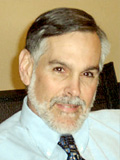
Larry Wexler, EdD
U.S. Department of Education Office of Special Education Programs
(time: 0:58)
Transcript: Larry Wexler, EdD
Our research shows that when training is comprised only of theory, discussion, demonstration, practice, and feedback, there is a limited chance that it will be used in the classroom. However, by adding coaching in the classroom, there is a significantly greater probability that the training will be used and sustained. Our research indicates that the addition of coaching in a training program results in a 95 percent probability that the practice will be implemented with fidelity in the classroom. And that is a terrific level of fidelity. The coaching approach encourages learning, growth, and teamwork all at the same time. The role of the coach is to support the teacher to effectively implement the practice with fidelity.
Transcript: Lynn Fuchs, PhD
Ongoing training and support is important when implementing a practice in your school because, although how to administer a test or how to conduct a small-group tutoring program may seem like it’s laid out clearly in a manual, it’s often not as easy as you think for personnel in your school to read the manual, be clear on what the directions say, and implement the tool in the way it’s been designed to use. In addition, even when you do a good job of initially training people to use practices as they’ve been designed to be used, sometimes there’s drift, and a tester or a tutor can begin to use a program in ways that it was not designed to be used. Then what we see is effects in your school being different from the effects that we think we can expect based on the research studies that are out there. So schools need to do a good job of thoroughly training the personnel in their schools to use procedures correctly in the first place and then continuing to monitor and supervise how people are using practices to make sure that there isn’t drift over time away from the way that the procedures were designed to be used.
Transcript: Joseph Torgesen, PhD
It clearly is true that all of the work in a school is not finished when they select a good reading program. This is true because many of the teaching routines—that is, the routine the teachers actually use to deliver the instruction in evidence-based programs—will be new to the teachers and some of them have to learn a new way of teaching, which is not easy to do from just reading a manual. They need to see models, they need to see how people actually implement parts of the lesson, and so forth. And then they need to have feedback on their own implementation because you can read about something and you can even see it modeled but then your own interpretation might be a little off, and having an expert look and see how you’ve implemented can really go a long way towards helping you shape your behavior so that it’s more consistent with what the authors of the program had in mind in the first place. When you have a lot of teacher turn over, you need to continually retrain the teachers, and other teachers might need refresher training and support. Since good reading programs are complex, it’s an area which strong professional development can really have an impact in improving how well teachers implement.

